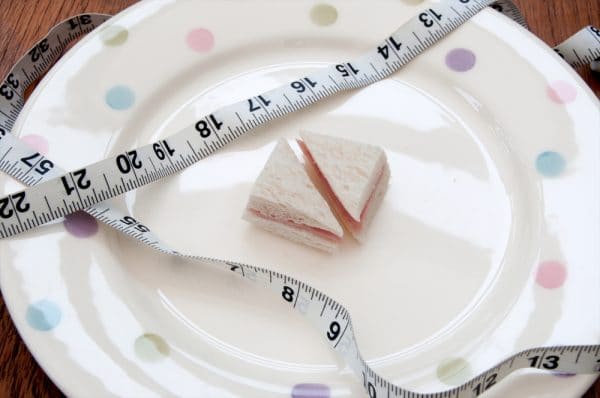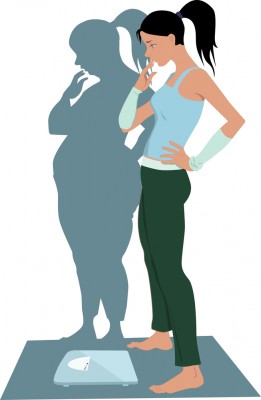In recent years, you may have heard a lot about BMI Chart measurements but not known exactly what it is. BMI or body mass index is one way of measuring a person’s health and relative body size. It is an indirect way to measure your body fat content in comparison to your height, which represents your body fat content. Body mass index is equal to your weight in kilograms divided by your height in centimeters squared. This measure works best on men and women over age 20. BMI is a great way to measure body fat if you are on a budget, as it costs nothing and can be done by yourself at home.
Because it measures excess weight and not actually excess fat, BMI is considered a surrogate measure of body fat. However, studies show strong correlations between BMI measurements and the results of more direct body fat measures. If you are concerned about your weight or body size, calculating your body mass index is a good place to start before heading to the doctor’s office. BMI can predict future weight-related issues including disease and even death, so it is a very helpful tool in screening for health risks and obesity.
How to Calculate Your BMI
The easiest way to calculate your body mass index is by using an online BMI calculator like this one. Just plug in your weight, height, age, and gender and the calculator does all the work for you. Not only does it tell you your body mass index measurement, the calculator also tells you a healthy BMI range for your age and sex. There are also BMI charts where you can find your height on one axis and your weight on another. Then follow the numbers to where these data points meet and the number shown is your body mass index. Sometimes these charts are not totally inclusive of very small or very large weights and heights, so calculating your BMI using math is better for people of non-average body sizes.

You can also calculate your BMI on your own with a simple mathematical formula. If you know your height in centimeters and your weight in kilograms, just divide your weight by your height squared (multiplied by itself). If you know your weight in pounds and your height in inches, you can calculate your BMI using a more complex mathematical formula. First, multiply your weight in pounds by 0.45. Then multiply your height in inches by 0.025. Square your answer from step two. Finally, divide your answer from step one by your answer from step three and you have your BMI! This process is an easy way to convert your imperial body measurements to metric so they fit into the formula. Alternately, you can multiply your weight in pounds by 703, then divide that answer by your height in inches squared. Both formulas provide relatively accurate results and are easy to do on a calculator.
What Are The Different BMI Classifications?
Generally, health care professionals say that the healthy range for body mass index is 18.5 to 24.9. For both men and women, a BMI measurement under 18.5 is considered underweight, 25 to 29.9 is considered overweight, and 30 and above is considered obese. As we will discuss later, these numbers do not always accurately reflect the health of the individual but do a pretty good job for the general population. Always consult your health care practitioner with concerns about your health, including your weight and body composition.
For children and adolescents, body mass index is calculated the same way but is classified into percentile categories. This way, children are compared to BMI data of other kids their age and gender. Percentiles mean that the child’s data, in this case their body mass index, is higher than whatever the number is. For instance, a child whose body mass index is in the 45th percentile means that they have a higher BMI than 45 percent of kids their age and sex. A BMI measurement that falls into less than the 5th percentile is considered underweight, from the 5th to the 85th percentile is seen as the healthy weight range, the 85th to 95th percentile is considered overweight, and a body mass index in the 95th percentile or above is seen as obese.
Health Issues Related to High BMI
As you probably known, there are a great number of health risks related to being overweight and obese, which is indicated through a high body mass index measurement. Though it is unsure why, many types of cancer are linked to weight gain and the unhealthy habits that lead to weight gain like poor eating habits and lack of exercise. Another one of the most deadly problems that can arise from being overweight is high blood pressure. When you have excess body fat, it is harder for your heart to pump blood all over your body. High blood pressure, also known as hypertension, can lead to strokes, heart attacks, and kidney failure if not treated.
As mentioned above, heart disease and stroke are two very scary and fatal health problems that often occur as a result of a high body mass index. Overweight people tend to have restricted blood flow, high blood pressure, and high cholesterol levels, all of which can then lead to heart disease and strokes. Lack of exercise and an unhealthy diet are usually the cause of a high BMI and are often the cause of hardened, narrow arteries that lead to heart attacks. The high blood pressure related to a high body mass index is the number one cause of strokes, so keeping blood pressure in check by losing weight can greatly reduce your risk for both of these issues.
Another issue that can arise from a high body mass index is type 2 diabetes. High blood sugar levels that occur after the development of this disease often leads to heart and kidney diseases, strokes, blindness, and even lead to the amputation of limbs. People who carry most of their excess weight around their middles are especially prone to developing type 2 diabetes.
Fatty liver disease is yet another potentially fatal health issue caused by a high body mass index. It is caused by a build-up of excess fat on the liver and often has few or no symptoms. However, fatty liver disease is dangerous and can lead to liver damage, the formation of scar tissue (cirrhosis) and even liver failure if left untreated. Though the cause of fatty liver disease is unknown, eating a healthy diet and exercising on a regular basis reduces your overall body fat content, which could help reduce your risk for developing the disease. People with a high body mass index may also develop kidney disease. The top two causes of chronic kidney disease are diabetes and high blood pressure, two health issues that often arise in overweight people. Losing weight, keeping blood sugar and blood pressure in check, and eating a diet low in sodium can all help lower your risk for kidney damage and disease.
Besides the many more serious health issues being overweight can cause, there are a few that are probably not fatal but still worrisome. One of these is osteoarthritis. Osteoarthritis is defined as pain and stiffness in the joints, commonly the knees, hips, hands, and lower back. Having a high body mass index puts you at risk for this disease because the excess weight puts more strain on the joints, causing pain and inflammation. Not doing regular exercise, which is usually tied to being overweight, can also cause joints to be weak and painful. Sleep apnea is another common health problem for overweight or obese people. People with this disease experience frequent pauses in breathing while they sleep, leading to difficulty focusing and sleepiness during the day. Excess fat in the neck make the airway smaller, which causes difficulty breathing. Therefore, decreasing your body mass index can greatly reduce your risk for developing sleep apnea.
Did you know that having a high body mass index can even lead to pregnancy problems? There are a number of problems that can arise for both mom and baby if the mother is overweight. For example, pregnant women with a high body mass index are more likely to develop gestational diabetes (high blood sugar during pregnancy), preeclampsia (high blood pressure during pregnancy), and even needing a C-section, which can lead to a longer recovery time for mom. Not only are the mothers at risk for health problems, but being overweight or obese while pregnant can cause issues for baby, too. Risk increases for baby being born too early, being stillborn, and having brain and spinal cord defects. This could even lead to the baby being an overweight child and adult. If you have a high body mass index, consider losing weight before getting pregnant to reduce your risk for these health issues.
Health Issues Related to Low BMI
In a society where thinner seems to be better, that is not the case. People with a low body mass index in the underweight range are at risk for a number of health problems just like those with high body mass indexes. Though the issues are different, they are just as dangerous to your health.
When a person denies themselves the proper amount and type of food, he or she can suffer from a wide range of negative side effects. Though they will have the low body weight they desire, problems like malnutrition, weakened immune system, hair loss, dry skin, anemia, and fragile bones can occur. In the most serious cases, extreme dehydration, thyroid problems, seizures, heart arrhythmia, and even death can result. Many of these symptoms can lead to more serious, long-term side effects and could even lead to death.

Sometimes people with low body mass index measurements are that size for reasons other than eating disorders or naturally small builds. Diabetes, thyroid disorders, cancer, and digestive diseases could all be causes of being underweight. If you rapidly or unintentionally lose weight not due to diet or exercise, consult your health care professional to find out the cause.
Is BMI the Most Accurate Indicator of Health?
Though body mass index is a simple, easy, and inexpensive way to measure your body size and fat content, it is not perfect. Because it does not directly measure your body fat, the results will not be as accurate as other measures. While body mass index should not be used as a diagnostic tool, it is a good screening tool for identifying potential weight problems in adults.
For a number of reasons, body mass index is not always the most accurate reflector of health and body size for everyone. For example, people who have a highly muscular physique like bodybuilders, boxers, and other athletes may have a BMI in the obese range because muscle weighs more than fat. Obviously these people do not have high body fat content but their body mass index measurement shows that they do because of the formula. Their stronger hearts can handle the higher body weight in comparison to their height, so they are still considered healthy. Athletes should use other body fat content measures like the ones listed below for a more accurate picture of their health.
Age is also not factored in to body mass index calculations. On average, an older adult will have a higher percentage of body fat than a younger person with the same body mass index. This could be for a multitude of reasons but is probably due to muscular degeneration that occurs with age. Because of the different hormone makeup in their bodies, women usually have a higher body fat content than a man of the same body mass index. For these reasons, body mass index may not give the most accurate picture of health for everyone.
If you are a woman who is pregnant, body mass index is not a good measurement to use. Always listen to your health care provider concerning weight gain during pregnancy. Pregnant women need to gain extra weight for the health of themselves and their unborn baby. While your BMI measurement would show that you have excess weight when pregnant and may push you into the overweight or obese ranges, you are probably still healthy. Consult your doctor if you have any concerns about gaining too much weight during pregnancy.
Alternate Measures to Body Mass Index
If you want more in-depth results about your body fat, there are a number of alternate measures that you can take. If you are on a very strict budget, you can do more accurate body fat measures by taking your body measurements at home. For instance, these calculators use a number of methods including those used at the YMCA and in different branches of the US military to determine body fat content. (Also read this article on bmi vs body fat)With just a tape measure, you can get a more accurate picture of your body composition in the comfort of your own home at no cost to you. Alternately, if you are really concerned about your weight or have health insurance, the tests below are even more accurate at measuring your body fat content. They are done by health care professionals, so they are more involved and generally give more accurate results.

One alternate method to body mass index is measuring skinfold thickness on different parts of your body. This test entails using a tool called a caliper to pull the skin and fat away from certain parts of the body and measuring that flesh in millimeters. Measurements are taken on the upper arm, mid-chest, beneath the shoulder blade, next to the belly button, side of the torso, above the hip bone, and upper thigh. These measurements are then added together and plugged into a formula along with your age to calculate your body density. Body density is the relationship of your body volume (how much space your body takes up) to your body weight. Because lean tissue (like bone and muscle) takes up less space than fatty tissue, a higher body density means a higher percentage of lean tissue (and therefore lower percentage of fatty tissue) found in your body. Problems can arise with this body fat measure if the practitioner is not highly skilled. If he or she grabs muscle with the tool instead of just skin and underlying fat, it will mess with your results. The equation used to calculate your body density with this method was developed using white male subjects, so people of color and women may not get as accurate results with skinfold thickness tests.
Bioelectrical impedance, or BIA, measures body composition by seeing how electrical signals pass through your body. You stand on a monitor while a low, safe electrical signal pulses up through your feet, legs, and abdomen. Because electricity passes quickly through water, which is found in hydrated muscle tissue, and slowly through fat tissue, BIA measures how much of each type of tissue your body contains. This is a fast and painless test but should not be done on women who may be pregnant or people with electronic medical implants like pacemakers in their bodies. Depending on the type of BIA device your doctor uses, a lot of your body can be skipped when the current goes in one leg or arm and out the other, which obviously changes the results of the test. BIA devices are also programmed with an equation based off the data from another body composition method, so this test is predicting off of a prediction, leading to a relatively high error rate.
Another alternate test to body mass index is underwater weighing. This test measures the density of your body, data which can then be used to calculate your body fat percentage. Fat-free body mass like muscle and bones are denser than fat and the content of both of these types of tissue can be determined from your body density. During your hydrostatic underwater weighing test, you will sit on a special seat, blow all the air out of your lungs, and sink down into the water in a large tub until your whole body is submerged. You must stay motionless to get an accurate reading and often the test will be repeated for the most accurate results. This test can be expensive and triggering for those who are afraid of drowning, though it is a very safe procedure. Underwater weighing may underestimate body fat for athletes, who tend to have dense bones and muscles, and overestimate it for those suffering from osteoporosis.
Finally, dual energy X-ray absorption, also known as DXA or DEXA, measures your bone density, which in turn can be used to calculate your body fat percentage. This procedure uses a tiny, safe amount of radiation to take a picture of the inside of your body (most often the hips and lower spine). This test is usually done to test for osteoporosis and other bone disease but is also useful in calculating body composition. DEXA is a great alternative to underwater weighing for people on a budget or who are afraid to be submerged in water. As mentioned above with the underwater weighing test, the DEXA procedure may provide inaccurate results for people with especially dense or especially porous bones. Because the procedure just measures the quantity of the bones in your body instead of the quality, it does not always provide an accurate reflection of body composition for everyone.
As you can see, body mass index or BMI is a simple, useful tool for learning about your body. With just a few quick calculations, you can get a pretty good idea of how much excess fat you have on your body. While your body mass index measurement is not a replacement for a more accurate, in-depth test performed by a health care professional, body mass index is a good indicator of potential weight-related health problems. People on a budget can especially benefit from calculating their body mass index because it is free to do at home. Though body mass index is a helpful body fat measure, it is not always accurate for everyone. People with little body fat but lots of muscle, certain ethnicities, pregnant women, and the elderly may not get the most accurate reflection of their body fat content through body mass index measurements. Generally, having a high body mass index is linked to health problems like kidney disease, heart disease, and high blood pressure. Low body mass index measurements usually mean malnutrition, low immune system function, and thyroid issues. It is important to keep your body mass index within the healthy range of 18.5 to 24.9. Remember to always consult your doctor if you have concerns about your weight or body fat content.







